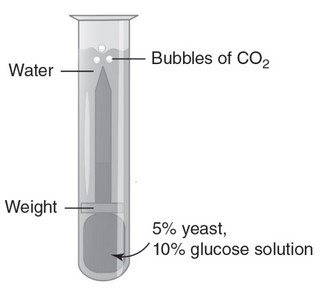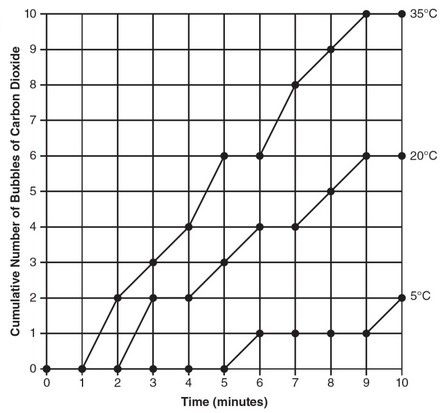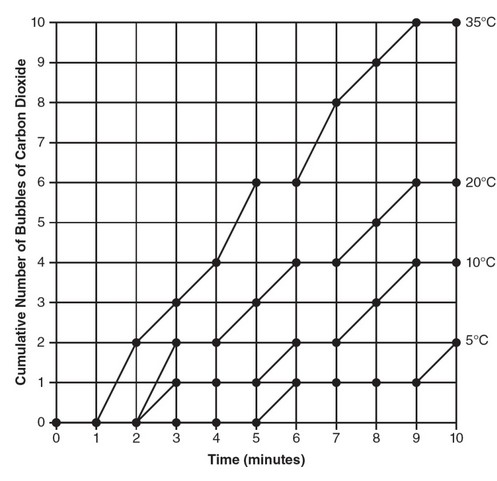Question
NAD+has an important role as an electron carrier in glycolysis.
(a) Identify the process of aerobic cellular respiration during which a cell replenishes its supply of NAD+.
(b) Identify the process of anaerobic respiration during which a cell replenishes its supply of NAD+.
(c) If a cell’s supply of NAD+ran out, predict the effect that would have on glycolysis within that cell.
(d) Justify your prediction from part (c).
▶️Answer/Explanation
Ans:
(a) In aerobic cellular respiration, a cell’s supply of NAD+ is replenished during oxidative phosphorylation (when NADH
delivers its electrons to the electron transport chain).
(b) In anaerobic respiration, a cell’s supply of NAD+ is replenished
during fermentation (when NADH donates its electrons to a
pyruvate molecule).
(c) If a cell’s supply of NAD+ ran out, the cell would not be able to undergo glycolysis.
(d) Glycolysis requires the input of NAD+; if there were no NAD+
available, glycolysis would halt. Living organisms require the input
of energy, so the cell would eventually die.
Question
In eukaryotes, ATP synthase is found in the inner membrane of the mitochondria. In prokaryotes, which do not have mitochondria, it is
found on infoldings of the cell membrane.
(a) Make a claim as to why ATP synthase is found on the cell membrane in prokaryotes.
(b) Justify your claim from part (a) using your knowledge of how ATP synthase works.
(c) Explain why ATP synthase would not be effective if it was found in the cytosol of a cell.
(d) Describe how the structure of the mitochondria allows for the formation of a proton gradient.
▶️Answer/Explanation
Ans:
(a) The enzyme ATP synthase is found on the infoldings of the cell
membrane in prokaryotes because the enzyme needs a proton
gradient to function.
(b) ATP synthase uses a proton gradient to drive the synthesis of ATP
through chemiosmosis. To create a proton gradient, there must be a
way to separate the protons. In eukaryotes, this separation occurs
on either side of the inner mitochondrial membrane. Since
prokaryotes do not have mitochondria, they separate protons across
the only membrane they have, the cell membrane. So that is where
ATP synthase is located in prokaryotes.
(c) If ATP synthase was found in the cytosol of the cell, there would be
no way to separate the protons and create a proton gradient in the
cytosol. So ATP synthase could not function.
(d) The mitochondria contain outer membranes and inner membranes.
The electron transport chain is located on the inner membrane, and
it pumps protons into the intermembrane space between the two
membranes. ATP synthase, which is also located on the inner
membrane, can then use this proton gradient to power the
production of ATP.
Question
Saccharomyces cerevisiae (also known as baker’s yeast) is a eukaryotic organism. A solution containing 5% yeast and 10% glucose is placed in a transfer pipette. A weight is placed on the transfer pipette, and the apparatus is placed in water in a large test tube, as shown in the following figure.
This process is repeated two more times, and each test tube is placed in a beaker of water at different temperatures (5° Celsius, 20° Celsius,
and 35° Celsius). To measure the amount of cellular respiration, the cumulative number of bubbles of carbon dioxide released over a 10-
minute period is recorded. The data are shown in the following table.
(a) Identify the independent variable and the dependent variable in this experiment.
(b) On the axes provided, construct an appropriately labeled graph of the experimental data.
(c) Calculate the average rate of carbon dioxide production per minute at each temperature.
(d) A fourth experimental apparatus is placed in a beaker of water at a temperature of 10° Celsius. Add a line to your graph from part (b) that predicts the rate of cellular respiration at 10° Celsius. Justify your prediction.
▶️Answer/Explanation
Ans:
(a) The independent variable is temperature. The dependent variable is
the cumulative number of bubbles of carbon dioxide produced.
(b) 
(c) Rate for \(5^o C = \frac{2 bubbles}{10 minutes}=\frac{0.2 bubbles}{minute}\)
Rate for \(20^o C=\frac{6 bubbles}{10 minutes}=\frac{0.6 bubbles}{minute}\)
Rate for \(35^o C =\frac{10 bubbles}{10 minutes}=\frac{1.0 bubble}{minute}\)
(d) The line for 10°C should be between the lines for 5°C and 20°C
(higher than the line for 5°C and lower than the line for 20°C). This
is because the rate of cellular respiration at 10°C will be higher than the rate at the colder temperature of 5°C and lower than the
rate at the warmer temperature of 20°C.
